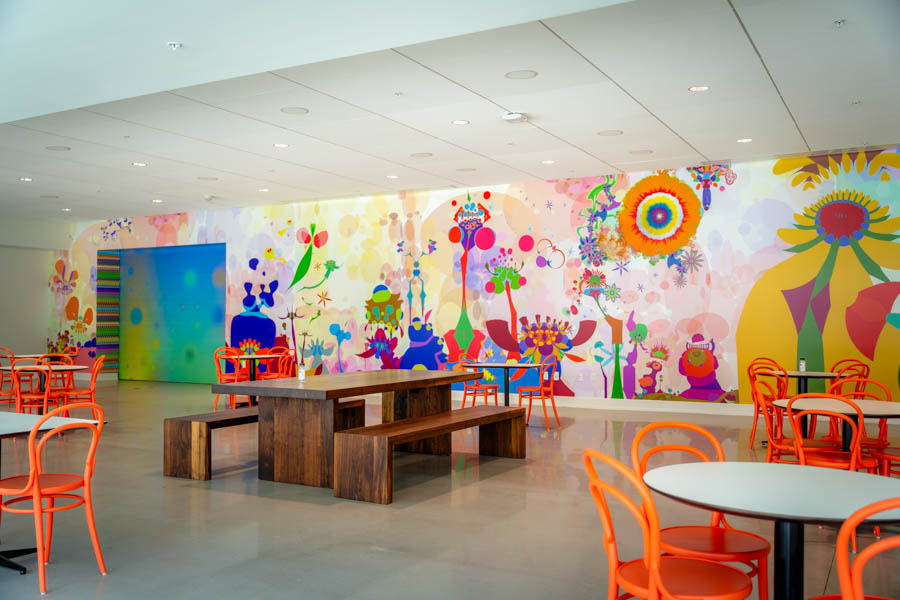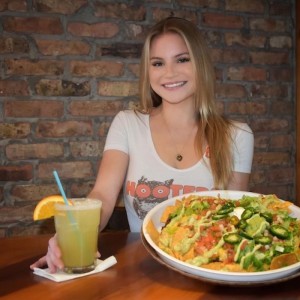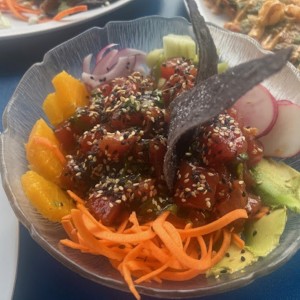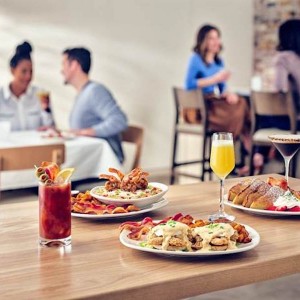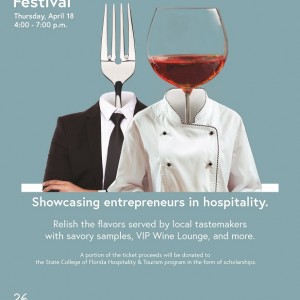When you drive by one of Southwest Florida’s ubiquitous heirloom tomato fields, do you ever wonder what happens to the bits and pieces of the tomato that never make it onto a sandwich? For those that wind up at Bistro, the restaurant in the Sarasota Art Museum, their story is far from over.
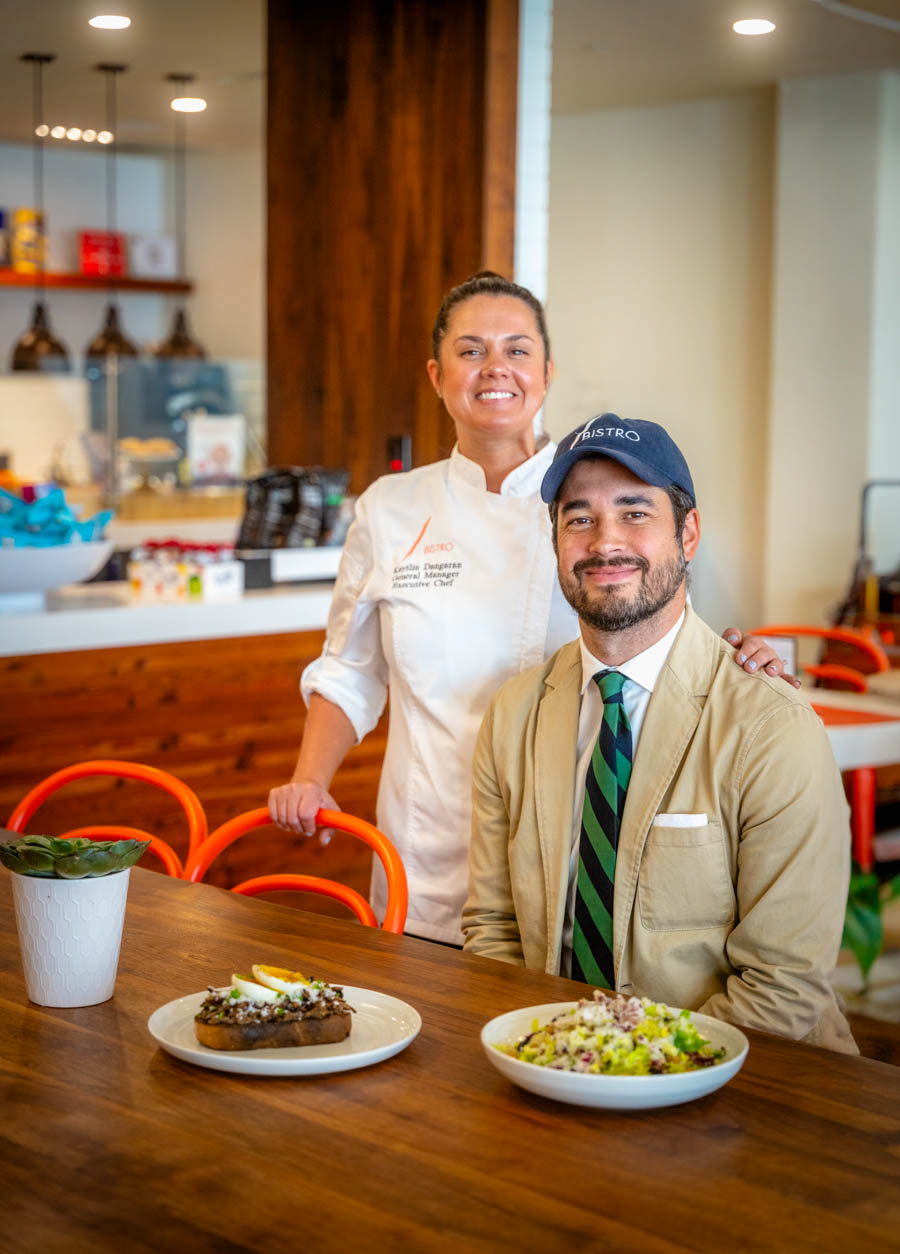
Opened in 2020 during the pandemic, Bistro is run by Cafe Operations Manager John Dangaran and his wife, Executive Chef Kaytlin Dangaran. The pair joined the project, located in the former Sarasota High School building—designed by local architectural icon Paul Rudolph—when it was under construction. “Bistro was imagined as a French bistro based upon the building. I loved the idea of a French bistro theme, but I also wanted to incorporate a lot of local stuff,” Kaytlin says. “We try to stay super local and support local. Our dairy is from Dakin Dairy Farms in Myakka. Our honey and bee pollen are from Old Florida Bee Company in Myakka. And C’est La Vie does our bread. It’s a little bit French bistro and a little bit American farmstand.”
A native Floridian, Kaytlin grew up in Brandon, where she first developed her love of cooking. After studying at Florida State University and working in the nonprofit world, she went on to study at The French Culinary Institute, which is now the International Culinary Center. She worked in New York City and San Francisco, immersing herself in the culinary styles that define each city. From New York, she gained an appreciation for the Italian sandwiches served in Little Italy, to which she pays homage with the Italian Chopped Salad on Bistro’s menu. With radicchio, pepperoncini, little gem lettuce, salami, kalamata olives, chickpeas and a parmesan black pepper vinaigrette, the bold and flavorful salad packs a punch with every bite.
“The way chefs think about food on the West Coast is totally different from the East Coast. In New York, everything on the plate has a purpose. You’re planning all of your food steps on your dish. Everything has a meaning, and it’s placed there specifically for its purpose. In San Francisco, you start with the product first, and then you work your way back. Everything on the plate still has a purpose, but your creative process is different,” adds Kaytlin. “One way, you start with a product, and the other way, you might start with an idea. I’m so grateful that I got to do that and flip my brain as a young chef.”
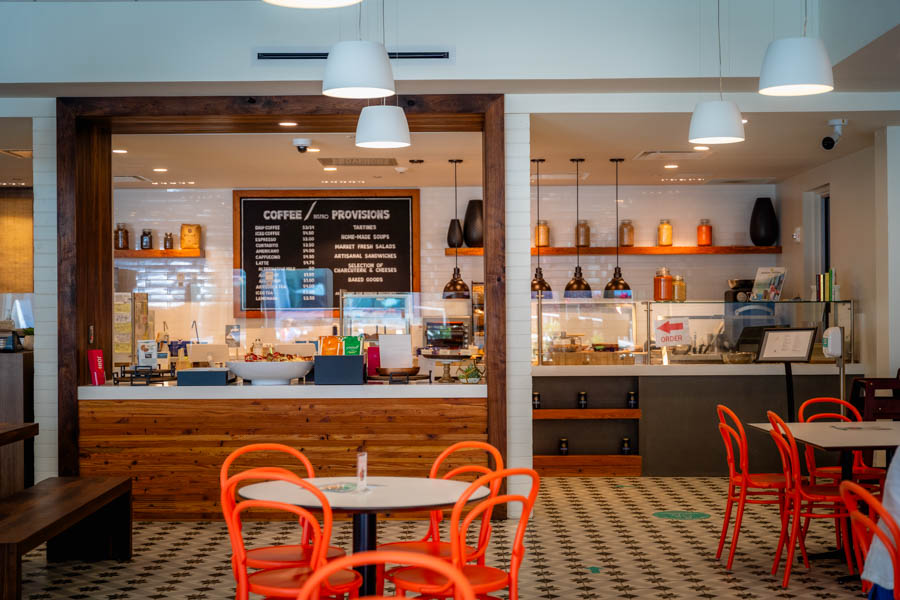
The opportunity to return to Florida came when the couple worked at the Pérez Art Museum Miami and the Phillip and Patricia Frost Museum of Science after living in New York City and San Francisco. When they learned that their company, Constellation Culinary Group, had been awarded the contract to work with the Sarasota Art Museum, they moved to Sarasota to spearhead the project, which blends the works on display in the galleries with Kaytlin’s culinary artistry. “We don’t look at ourselves as being separate from the museum. We have this symbiotic relationship, and we like to refer to it as a campus,” John says. Diners on campus can enjoy a meal in the restaurant or to go, while relaxing in common spaces like the front lawn. Inside the space, Bistro features art exhibits like Staccato by Molly Hatch—a wall of 70 hand-painted earthenware plates in copper luster and royal blue. The opposite wall celebrates the history of the Thonet bistro chair featured in the dining space. “Our company is in a lot of places, but this is the only location that I know of that is actually gallery space,” John adds. “When you start thinking about it, there’s layers upon layers upon layers, and art on top of art.”
Creating edible art that shines in the dining room is on Kaytlin’s mind when she is preparing for special events like the exciting Pop-Up Nights. “You come on campus and do a private tour at night with the director or curator. Then, you come to Bistro, and the entire menu is based on everything that you just saw,” she says. “We only do it that one night; we never recreate it after that. When I do those menus, I either sit down with the curator or research the art, and there’s a lot of backstory behind the dishes that you eat. You just saw it, and it looked exactly like it when you sat down.” She has created checkered, printed cookies that evoke the checkered print “Easter eggs” found in paintings by Robert Colescott. And she has used feuille de brick (a thin pastry dough) to mimic Juana Valdés’ Redbone Colored China Rags, which resemble fabric but are ceramic.
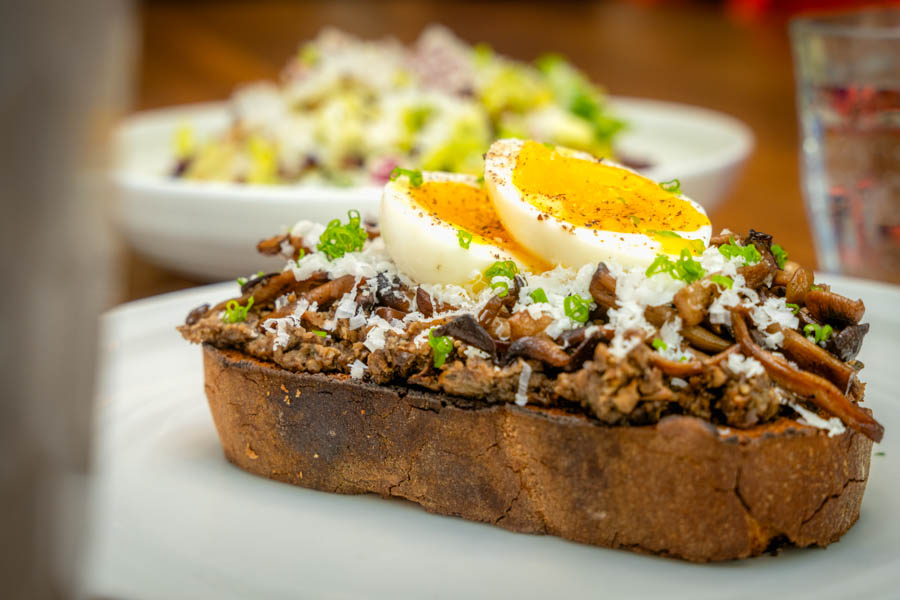
Even the dishes that don’t represent works of art are magnificent. The Wild Mushroom Tartine emerges from the plate like a mountain that takes guests to the summits of fungi flavor. Served as an open-faced sandwich on a slice of cereal loaf baked by C’est La Vie, the dish features a duxelles, or purée, of cremini mushrooms, shallots, thyme and butter mixed with a creamy Mornay cheese sauce. Kaytlin tops the dish with roasted oyster, hon-shimeji, maitake and cremini mushrooms tossed in truffle oil, lemon juice and chives, as well as six-minute eggs which have solid whites and runny yolks, and then garnishes it with chives and parmesan. “It’s decadent, and it highlights how you can use mushrooms in a couple of different ways,” she says.
While Kaytlin is a huge fan of mushrooms, her menu also celebrates the humble tomato in an unexpected way. The grilled cheese–with Pullman bread that has a parmesan crust on the outside, and a Fontina Mornay and aged sharp white cheddar on the inside–wouldn’t be complete without the house-made tomato jam and accompanying sweet pickles. Made with toasted mustard seeds, shallots, tarragon, basil, sherry vinegar, heirloom tomatoes and honey, the jam is a manifestation of Kaytlin and John’s passion for reducing food waste by reusing ingredients. Even when tomato soup isn’t on the menu, guests can enjoy the flavor combination by dipping the sandwich into the jam. Side by side in little square bowls, the bright green pickles and red tomato jam call to mind the vivid colors of a painter’s palette. For the bits and pieces of a tomato with an unknown fate, being part of this dish is an incredible stroke of luck, as well as a tribute to Bistro’s commitment to local ingredients, culinary innovation and immersive experiences.





